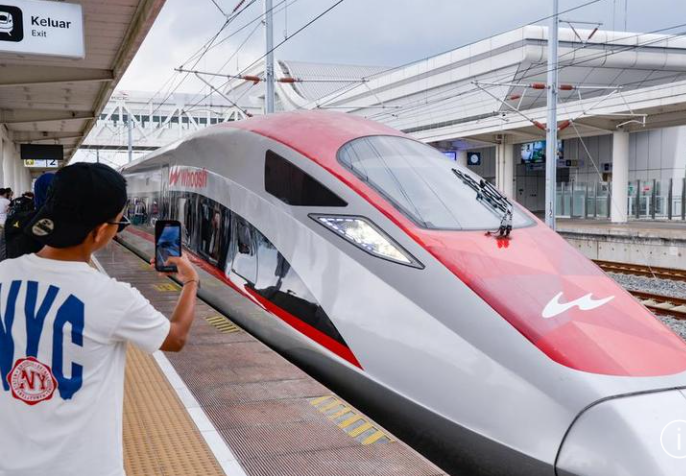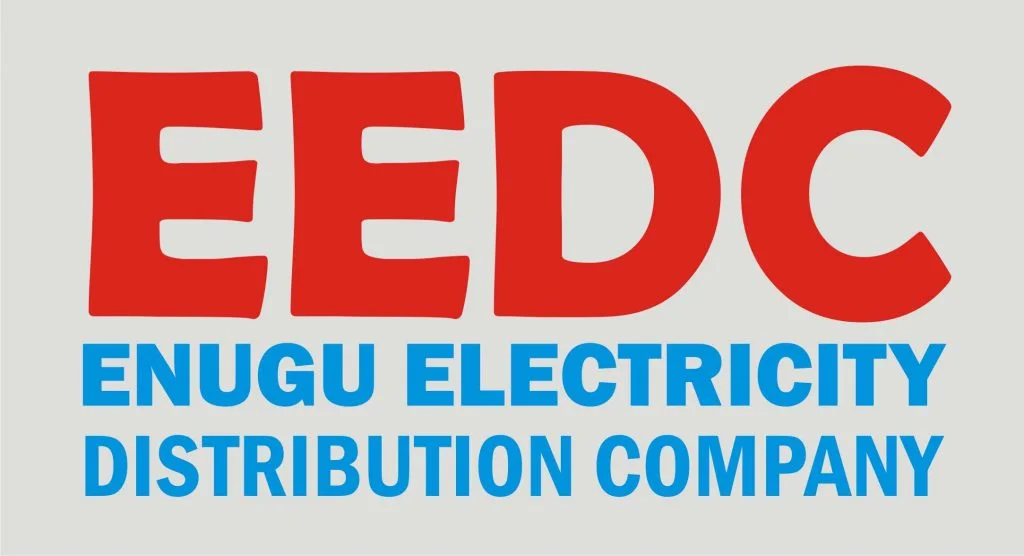– “Indonesia is now seen as a model for high-speed rail development in ASEAN,” said Dwiyana Slamet Riyadi, president director of PT Kereta Cepat Indonesia China.

JAKARTA, (Xinhua)/FLOWERBUDNEWS: – Since the launch of commercial operations in October 2023, the Jakarta-Bandung High-Speed Railway, locally known as Whoosh, has ushered in a new era of modern transportation for Indonesia.
As Southeast Asia’s first high-speed rail system, Whoosh connects Jakarta, Indonesia’s largest city, with Bandung in West Java, drastically reducing travel time from over three hours to just 46 minutes.
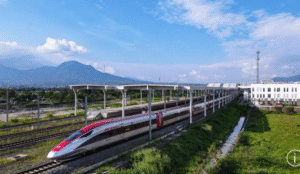
This leap in mobility has delivered more than just faster commutes. It has redefined the travel experience for millions of Indonesians and brought new momentum to economic activity along the railway corridor.
ECONOMIC BENEFITS
According to PT Kereta Cepat Indonesia China (KCIC), the Indonesian-Chinese railway joint venture has safely carried over 10.6 million passengers on 31,614 trips as of July 25, covering more than 4.9 million kilometers since its commercial operations began. With up to 62 daily train services and a peak daily ridership of 26,800, public enthusiasm continues to rise.
For Sophia, a 37-year-old mother of two who commutes between Jakarta and Bandung every weekend, the benefits are deeply personal. “Whoosh has become a proper mode of transportation. Time is valuable; we shouldn’t have to spend so much of it on the road,” she said.
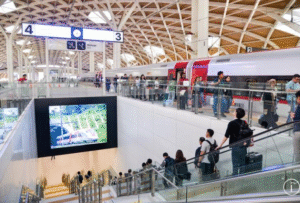
Beyond convenience, Whoosh has also triggered notable economic benefits. Business owners like 45-year-old Akhyar, who runs a cake shop near Bandung’s train station, have witnessed a sharp rise in customers, many of whom are tourists brought in by the high-speed service.
Similarly, the Indonesian Travel Agent Association reported growing demand for group tours using Whoosh, especially among students and corporate travelers. “It helps promote Jakarta as a tourist destination, especially for ASEAN visitors,” said the association’s Chairwoman Pauline Suharno, using the acronym for the Association of Southeast Asian Nations. “Among ASEAN countries, only Indonesia has a high-speed train.”
According to Segara Research Institute Executive Director Piter Abdullah, Whoosh is not only a game changer for mobility, but a catalyst for new economic activity.

“Mobility is a driver of the economy. The growing number of passengers shows that people are increasingly recognizing the value of time efficiency and travel comfort. High-speed rail can trigger the emergence of new economic centers,” he said.
This project represents a crucial first step in developing rail-based transportation across Java Island, unlocking new zones of productivity and investment, he added.
ENHANCED CONNECTIVITY
The areas surrounding Whoosh’s stations, such as Tegalluar, Padalarang, and Karawang, are already seeing the rise of new residential communities, commercial centers, and upgraded infrastructure. Halim Station, near Jakarta’s international airport, is evolving into a critical intermodal hub, supporting seamless air-rail connectivity.
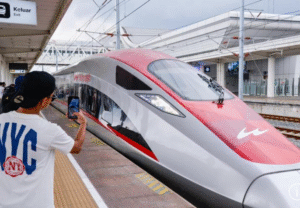
“Whoosh has significantly enhanced regional connectivity and land value,” said KCIC’s Corporate Communications Manager Emir Monti. “It’s also generated thousands of jobs and supported the growth of a full high-speed rail industry chain in Indonesia.”
Emir believed that Whoosh is not just a transport upgrade, but a strategic leap in Indonesia’s development. “We didn’t expect such a high level of enthusiasm at the beginning. But Whoosh has truly improved connectivity between Jakarta and Bandung and brought real convenience to the public,” he said.
He also emphasized the project’s role as a model for international collaboration and local capacity building.
“This isn’t just about importing equipment; it’s about building an integrated system. Through our joint venture with Chinese partners, we’ve transferred technology, trained local talent, and developed Indonesian professionals in operations, maintenance, and management,” he said.

Today, all train drivers and mechanics are Indonesians, a testament to the project’s commitment to localization and sustainability. “From technology to management, our local teams are growing through hands-on experience,” said Emir. “Whoosh didn’t just bring infrastructure. It built a foundation for future Indonesian expertise.”
GROWING EXPECTATION
According to Dwiyana Slamet Riyadi, president director of KCIC, Whoosh is the first full-scale application of Chinese high-speed rail technology abroad, making Indonesia the first country outside China to operate trains at a speed of 350 kilometers per hour.
“Chinese high-speed rail technology is truly advanced. They’re already developing trains that can reach 450 kilometers per hour. So I think it’s natural that China is the technological benchmark for Indonesia’s high-speed rail development,” he said.
He also noted that Indonesia’s success with Whoosh has drawn attention from other Southeast Asian nations eager to replicate its achievement. “Indonesia is now seen as a model for high-speed rail development in ASEAN,” he said.

As demand continues to climb and public satisfaction remains high, expectations are rising. German expatriate Ali Kurtze, a long-time Jakarta resident and self-proclaimed loyal Whoosh rider, expressed hope for further expansion.
“Fast, punctual, comfortable, I love this route. I hope the high-speed rail will one day extend to Surabaya or even Sumatra,” said Kurtze. “That would completely transform Indonesia’s transportation landscape.”


